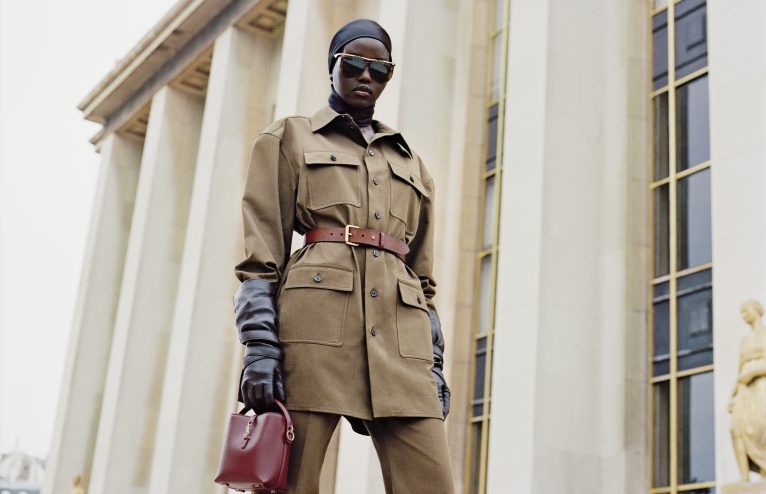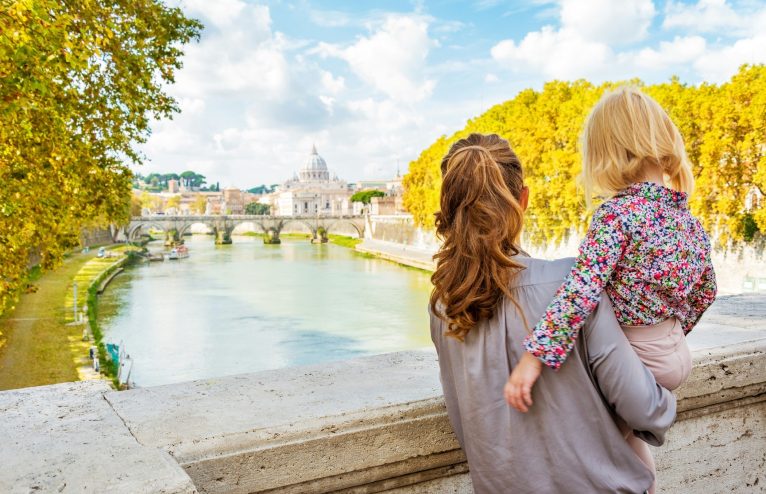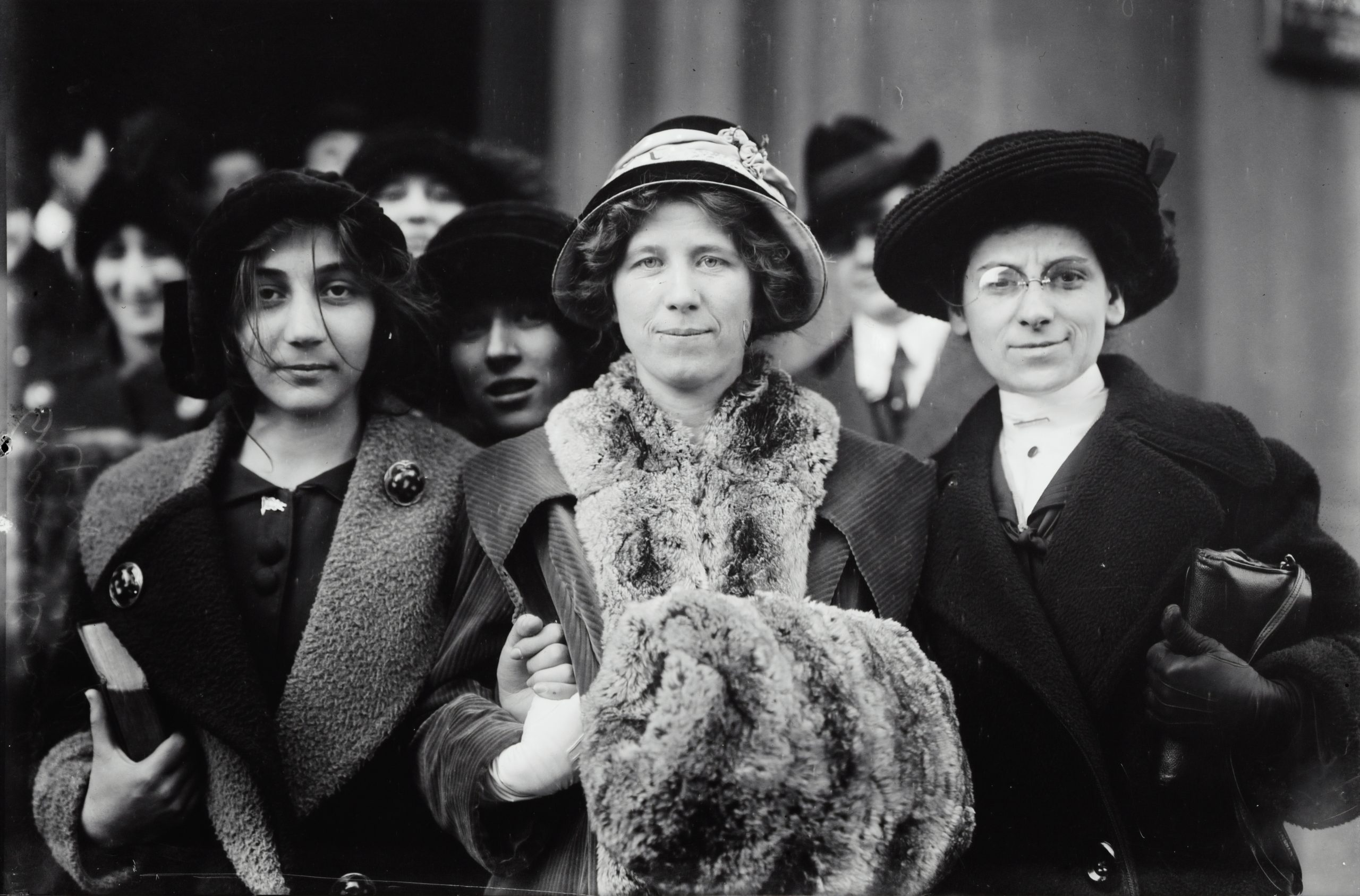No cosmetic has quite the power, allure or history of the red lipstick.
Seen on the lips of some global powerhouses, from Emmeline Pankhurst to Marilyn Monroe, the history of red lipstick is as rich as the pigments in your favourite shades. Perhaps just as scandalous, too.
In celebration of the makeup marvel that always gets lips talking, Citizen Femme’s beauty editor Becki Murray investigates how the glamorous lip colour earned its status, and the secrets behind its enduring appeal.
The history of red lipstick
“Red lipstick has been traced back to as early as the Egyptians, but is thought to date all the way back to prehistoric times,” explains the makeup artist Elisa Flowers. “Archaeologists have unearthed makeup artefacts as far back as 10,000 years ago, and 5,000-year-old red pigments used as lip rouge have been discovered in Egypt as well as throughout the Middle East.”
The influence of red lipstick has been felt across almost all continents and civilisations – from the rare red benibana flower used traditionally by Japanese geishas to stain their mouths, to the rouge used across the royal courts of Early Modern Europe.
Its history is also entwined with the story of women’s rights: “Red lipstick has symbolised many things throughout history – desirability, nobility, sensuality, sexuality, youth, health, fertility, dishonesty, and danger,” lists Flowers. “Red lipstick has made women feel powerful and liberated as our rights and independence have developed throughout history.”
Read on to discover the rich history of this powerful makeup essential…
“Starting in ancient times, with the Sumerians and Egyptians in around 5,000 BC, makeup was genderless and worn by all ages including the elderly and children, denoting social status, and wealth,” says Flowers. “It was also used for protection against the elements and arid climates – as it would not only add bold colour but moisturise the lips.”
Originally, lipstick contained all sorts of ingredients, based on what individuals had to hand. That included red algae, fish scales, crushed insects, gemstones, red lead, and even crocodile dung extract. Nowadays it utilises much more appealing nourishing oils and waxes, with the red colour provided by dyes and pigments. However, we haven’t completely moved away from one less pleasant ingredient used across history; carmine is a bright-red pigment still used to achieve a cool blue-toned red. It’s made by crushing the exoskeleton of female Cochineal beetles.
“The ancient Greeks and Romans rouged their cheeks and lips with a much lighter hand, preferring makeup to look more discreet, as makeup was associated with prostitution and low morals,” according to Flowers. Arguably this is where red lipstick’s close connection to sexuality starts to emerge – although with a less-than-positive slant. It’s also a good demonstration that a preference for different application techniques and textures is nothing new within beauty standards.
Throughout history, red lipstick (just like our hemlines) has been intrinsically linked to the perceived moral compass of the time, more so than any other cosmetic.
There were times when red lipstick was extremely fashionable; for example during the “rebirth of art and culture” in the Renaissance Period, when vermillion (orange-red) lips contrasted deliberately paled skin. Queen Elizabeth I of England was almost exclusively portrayed with a pale complexion, rouged cheeks, and a matching bright crimson lipstick – an image that the everyday public tried to recreate, and which is still firmly associated with her today.
However, this period was book-ended by times when red lipstick was not only unfashionable, but viewed with disdain. In the Middle Ages, “the fall of the Roman Empire and the rise of Christianity, which brought in the power of the church, saw makeup in general become taboo,” explains Flowers. “The paler one looked, the more innocent and pious they were perceived,” which meant red lipstick was firmly looked down upon.
Similarly, in the Victorian era, where even table legs were covered up for ‘modesty’, make-up was deemed unseemly and vulgar: especially the bright, boldness of red lipstick. For that reason, it would fall out of favour again during this period… but not for long.
For women involved in the suffrage movement, red lipstick was a symbol of resistance and rebellion. As Rachel Felder neatly explains in her brilliant book Red Lipstick: An Ode to a Beauty Icon: “[Red lipstick is] a bold communicator, telegraphing self-assurance and strength – and, in some contexts, defiance – without uttering a word.” During this highly significant time for female identity and power, the bold, “take notice” nature of red lipstick was suitably in full force for all to see.
Red lipstick was further associated with the Suffragette movement with the help of Elizabeth Arden – whose brand still produces signature red shades today. Elizabeth Arden publicly supported the women’s movement and, as the story goes, handed out her red lipsticks to marchers passing her salon in 1912. The colour quickly became a symbol of liberation and signified a demand for change on the streets of New York and beyond.
Even at times of adversity, red lipstick was there to rouse spirits. During World War I, lipstick was seen as a symbol of women’s new-found freedom; the result of women being brought into factories and joining the workforce to support the war effort. In fact, the term lipstick “bullet” is rumoured to have been (at least partly) inspired by the shape of World War I ammunition shells, made by women during the war.
Red lipstick was also a sign of patriotism during WWIII, which was neatly foretold by Harper’s Bazaar magazine in November 1937. An article on lipstick called “The Red Badge of Courage” read: “The streak of red steadies the trembling lips. For one poignant moment, the little stick takes on the significance of the sword.”
Red lipstick became a symbol of defiance and strength in the face of adversity for women during the wartime era of the 1940s. With the help of the stars of the day, including Katherine Hepburn, women were even encouraged to “Keep Your Beauty on Duty” and lipstick itself was never rationed.
Instead, popularity boomed and many brands brought out patriotic-themed red shades, including Arden’s Victory Red and Helena Rubinstein’s Regimental Red (both discontinued). The cosmetic was even reportedly given to women who had endured the horrors of Nazi concentration camps, as a small gesture of kindness by the Red Cross.
Next, it would be the ‘lights, camera, action’ of the rise of film, photography, and magazine printing that ignited red lipstick’s sexuality-boosting status. With television originally in black-and-white, a bold red lipstick brought definition to an actress’ mouth, especially the most glamorous of romantic leads.
“Clara Bow was so iconic in the 1920’s with her deep red lipstick and gorgeous shaped cupid’s bow mouth”, that the trend of defining that part of your mouth endures to this day,” explains Flowers. Similarly, Jean Harlow, one of Hollywood’s biggest sex symbols in the 1930s during the Golden Age of Hollywood was rarely seen without a scarlet swipe across her lips.
Then as Hollywood enjoyed its Golden Era, the biggest stars of their day continued the love affair with a bold red lip, as detailed heavily in Red Lipstick: An Ode to a Beauty Icon. Vivien Leigh wore red lipstick as Scarlett O’Hara in a classic (if not historically accurate) look for Gone with the Wind in 1939. Famously, in the opening scene of Dial M for Murder, Grace Kelly emerges with scarlet lipstick to match her dress and in Rear Window reclines, magazine in hand, wearing a candy-apple red. Audrey Hepburn wore the shade consistently in Funny Face, Sabrina, and War and Peace, too.
In the 1950s, Marilyn Monroe strengthened red lipstick’s cult status, aligning it with glamour and opulence in Gentlemen Prefer Blondes. What’s more, such was the power of red lipstick to Elizabeth Taylor that, as Felder explains, “according to numerous biographies…when a makeup artist put red lipstick on another actress, he was quickly scolded with the words, “Nobody but Elizabeth wears red.”
If red lipstick was the celebrity favourite, it was also the cosmetic industry’s gold mine. The colour powered fierce competition for customers between classic makeup brands, especially Elizabeth Arden and Helena Rubinstein, and also caused makeup brands like Revlon to embrace large-scale advertising campaigns using celebrity actresses. Max Factor frequently used Rita Hayworth, who reportedly had the “world’s best lips”, in red lipstick print advertisements too. Fashion houses joined the red lipstick craze too, including House of Dior’s 999 crimson and Gabrielle ‘Coco’ Chanel’s favoured cherry-red shade – products still popular today. Lipstick, as a result, became more commercially popular and has more or less stayed that way throughout time.
The second half of the 20th century started with a royal nod to red; the late Queen Elizabeth II of England wore a custom deep red shade to match her coronation robe in 1953, associating the bold shade with female power.
And, despite a brief drop in popularity during the 60s – at a time when doe-eyed makeup was especially popular – it was firmly brought back throughout the 70s, 80s, and 90s. In fact, some of the most defining women and imagery of the eras are aligned with a signature red lipstick look, while all bringing a sense of individuality to the style.
Bianca Jagger dancing at Studio 54 in the 1960s would later inspire Nars’ makeup line Studio 54; Debbie Harry’s platinum bob with a swipe of red was almost as signature as Blondie songs, and the 1980s glamorous supermodels – including Cindy Crawford – gave even more sex appeal to the style whenever they wore it.
Courtney Love continued the association of red lipstick with a punkish, ‘bend the rules’ persona in the 1990s, but one of the biggest cultural moments of this period was courtesy of Madonna: famously on the Blonde Ambition tour in 1990, she wore a custom super-matte blue-red creation by MAC, available now as Russian Red.
“When the economy goes down, lipstick sales go up.” That was the classic finding of Leonard Lauder, the son of Estée Lauder, in his Lipstick Index, explains the cosmetic product developer Ginger King. The term was coined during the early 2000s recession and is often quoted as an example of individuals turning to “little luxuries” during times of struggle. Luxury lipsticks, especially in bold colours like red, are seen to “give people an uplifting mood instantly”, at a smaller cost than other goods and services. It’s no surprise then, that almost all luxury fashion lines now have a beauty line – red lipstick included – especially since the economic instability of the turn of the millennium.
The start of the 21st Century also saw great strides forward in terms of lipstick textures and formulations. These included moisturising matte formulas that helped avoid red lipstick becoming noticeably patchy; liquid lipsticks allowing for smooth application without the need for a bullet; two-in-one lipstick-liners and crayons promising a perfect pout in one swipe. Long-lasting lip formulas during the height of mask-wearing in the Covid-19 pandemic remain at the heart of red lipstick innovation today.
As for 2024 and beyond, we can expect even more new formulations and technologies as new brands enter the market. Our prediction: red lipstick is likely to come full circle and become even more genderless and ageless just like in ancient times, with the help of social media and the inclusion of men and older women in bold marketing campaigns.
It also continues to be wore as a deliberately bold statement. Challenges to women’s rights across the world are once again being met not only with wide-spread protests but a bold swipe of red. Long may that continue…
Lead image: Carolina Herrera AW24.
We may earn a commission if you buy something from any affiliate links on our site.






























Any Questions or Tips to add?